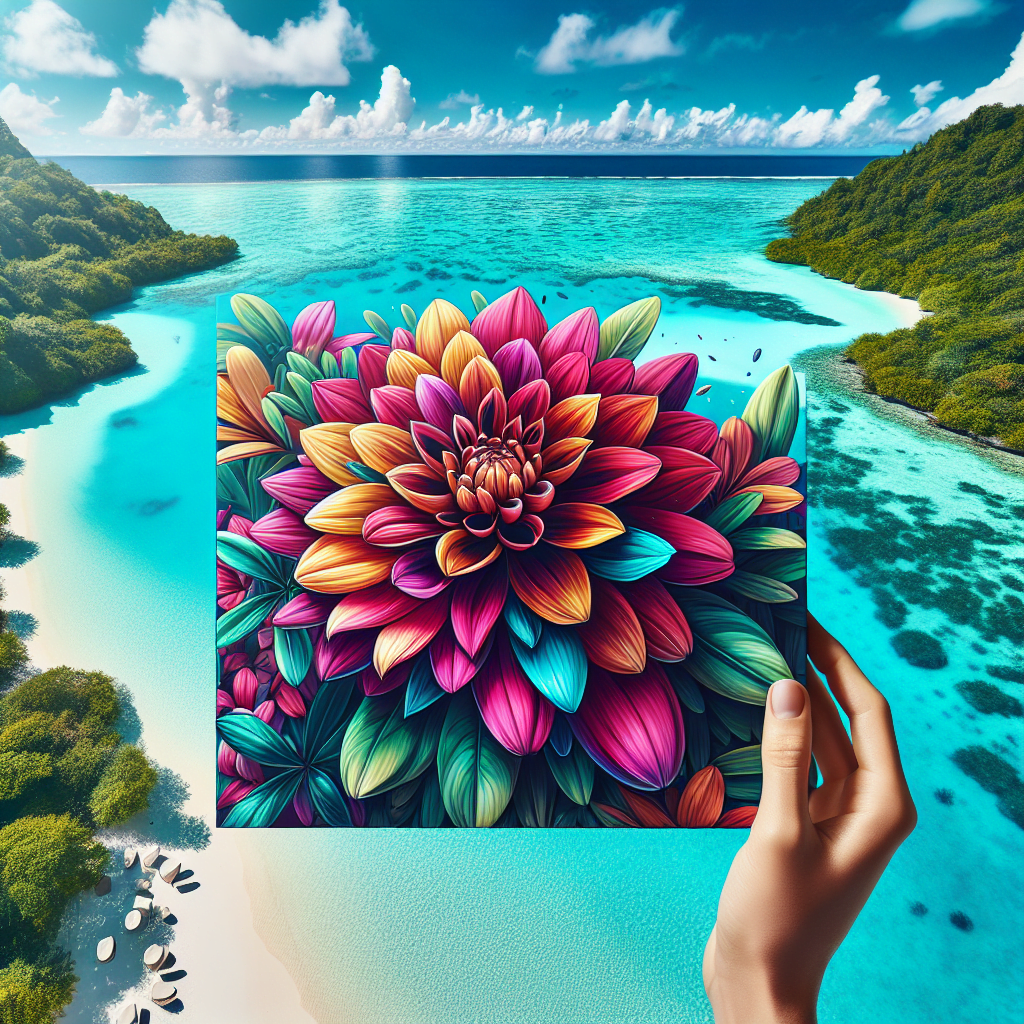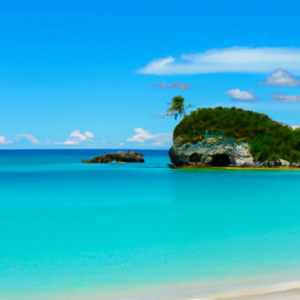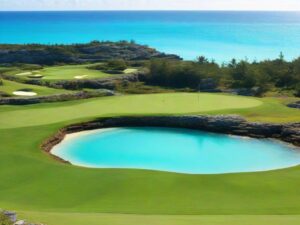You find yourself on the stunning beaches of Bermuda, surrounded by the breathtaking combination of Bermuda pink sands and turquoise waters. But have you ever wondered why the sands are pink? In this article, we will take a close look at Bermuda’s iconic pink sands and unravel the science behind their rosy hue. Prepare to be amazed as we delve into the fascinating world of beach geology and discover the secrets behind this unique natural phenomenon. Get ready to be enchanted by the beauty of Bermuda’s pink sands and the fascinating science that lies beneath their surface.
Table of Contents
ToggleBermuda Pink Sands: Formation of Pink Sands
Understanding the Composition
Pink sands, a remarkable feature of Bermuda’s beaches, are composed of a blend of minerals, shells, and organic matter. These unique sands have captivated visitors from around the world with their enchanting pink color. But what exactly gives them their distinct hue? To understand this, we need to delve into the components that make up the pink sands of Bermuda.
Role of Foraminifera
Foraminifera, tiny single-celled organisms that inhabit the waters surrounding Bermuda, play a significant role in the formation of pink sands. These microscopic organisms construct intricate shells made of calcium carbonate. Some species of foraminifera have vibrant pink or red pigments within their shells, which lend color to the surrounding sediment when they die and their shells break down.
Impact of Coral and Shells
Coral reefs, another essential contributor to the formation of pink sands, provide a significant source of sediment. When corals undergo natural processes of growth and erosion, they release coral fragments and shells into the surrounding waters. Over time, these coral fragments and shells become fragmented and mixed with other sediments, including foraminiferal shells, contributing to the unique composition and color of Bermuda’s pink sands.
Factors Affecting Sand Color
Various factors influence the color of Bermuda’s pink sands. One important factor is the ratio of foraminiferal shells, coral fragments, and other mineral particles. The relative abundance and distribution of these components can vary from one beach to another, resulting in slight variations in color. Additionally, environmental factors such as sunlight, sediment transport, and erosion can also influence the shade and intensity of the pink sands.
Distinctive Characteristics of Bermuda’s Pink Sands
Unique Blend of Minerals
The distinctive hue of Bermuda’s pink sands can be attributed to the unique blend of minerals found in the sand particles. The presence of minerals such as quartz, feldspar, and mica contributes to the overall coloration, giving the sand its pinkish tint. The specific combination and concentration of these minerals create the signature shade that sets Bermuda’s pink sands apart from any other beach in the world.
Effect of Sunlight and Reflection
The interaction between sunlight and the mineral composition of the pink sands also plays a role in their distinctive color. Sunlight contains different wavelengths of light, and when it hits the pink sand particles, they absorb certain wavelengths while reflecting others. This selective absorption and reflection result in the pink appearance that is so characteristic of Bermuda’s pink sands.
Grain Size and Shape
The size and shape of the sand grains also contribute to the overall appearance of Bermuda’s pink sands. Finer grains tend to scatter light differently compared to coarser grains, influencing the color perception. Additionally, the shape of the grains affects their ability to reflect and absorb light, thereby influencing the intensity and hue of the pink color observed on the beaches.
Sediment Transport and Erosion
The transport and erosion of sediments also influence the characteristics of Bermuda’s pink sands. Waves and currents continually shape and reshape the beaches, leading to the continuous deposition of sediments. As these sediments mix and interact with other components such as foraminiferal shells and coral fragments, the color and composition of the sands can undergo changes over time.
Comparison with Other Pink Beaches
While pink sands are a rare phenomenon, Bermuda is not the only place in the world where these unique beaches can be found. Several other locations, such as the Bahamas and Barbuda, also boast stunning pink beaches. While they may share similarities in color, the distinct mineral compositions, environmental factors, and geological histories of each location contribute to subtle variations in the shade and characteristics of their respective pink sands.
The Role of Iron in Pink Sands
Iron Oxides and Hydroxides
Iron oxides and hydroxides found in Bermuda’s coastal environment have a significant influence on the color of the pink sands. These compounds, predominantly iron-rich minerals like goethite and hematite, give the sand its reddish hue. The presence of iron in the sand can occur naturally, or it may be introduced through weathering and erosion processes.
Chemical Weathering Processes
Chemical weathering is a crucial process that contributes to the formation of pink sands. When iron-rich minerals in rocks and sediments are exposed to air and water, they undergo chemical reactions that result in the release of iron ions. These ions can then react with other compounds in the sand, altering its color and contributing to the pink hue.
Iron’s Influence on Sand Color
Iron’s role in the coloration of Bermuda’s pink sands is two-fold. Firstly, iron itself absorbs certain wavelengths of light, reflecting others and contributing to the distinctive pink color. Secondly, iron can react with other minerals and compounds within the sand, further modifying its color. The concentration and distribution of iron within the sand, along with other factors, ultimately determine the specific shade and intensity of the pink hue.
Linkage to Bermuda’s Geological History
Bermuda’s unique geological history has shaped the presence of iron-rich minerals, contributing to the vibrant pink sands found on its beaches. The archipelago’s formation through volcanic activity, followed by millions of years of weathering and erosion, created the ideal conditions for the accumulation of iron oxide-bearing sediments. The interplay of geological processes and the presence of iron in Bermuda’s coastal environment have given rise to the mesmerizing pink sands enjoyed by locals and visitors alike.
Foraminifera: Tiny Architects of Pink Sands
Introduction to Foraminifera
Foraminifera, commonly referred to as forams, are microscopic organisms that play a pivotal role in the formation of Bermuda’s pink sands. These single-celled organisms possess intricate shells made of calcium carbonate and are widely distributed in the marine environments surrounding the island.
Foraminiferal Shells and Color Spectrum
The shells of foraminifera exhibit a remarkable range of colors, including various shades of pink. This coloration can be attributed to the incorporation of pigments and organic compounds during the shell’s growth. While the exact pigments and mechanisms responsible for imparting pink hues are still being studied, the diversity of foraminiferal shell pigments contributes to the palette of colors seen in Bermuda’s pink sands.
Shallow Marine Environment
Foraminifera thrive in shallow marine environments, such as those found along Bermuda’s coastline, where they build intricate shells and contribute to sediment formation. The warm and nutrient-rich waters provide an ideal habitat for these tiny architects of pink sands, allowing them to flourish and contribute to the sand’s unique composition.
Foraminifera and Coral Reefs
Foraminifera have a symbiotic relationship with coral reefs, flourishing alongside the vibrant coral communities. These organisms feed on microscopic particles and organic matter, playing a vital role in recycling nutrients within the reef ecosystem. As coral reefs provide a significant source of sediment for Bermuda’s beaches, the presence of foraminifera in these environments further enhances the pink sands’ composition.
The Role of Foraminiferal Sediments in Sand Color
When foraminifera die, their shells settle onto the ocean floor and eventually contribute to the formation of sediments. Over time, currents and waves transport these sediments to the beaches, where they mix with other components and shape Bermuda’s pink sands. The foraminiferal shells, with their inherent coloration and varying pigmentation, become an integral part of the sand’s composition, infusing it with hues of pink.
Coral Reefs: Builders of Bermuda’s Pink Sands
Corals and Their Coloration
Coral reefs, known for their vibrant colors and intricate structures, also influence the pink sands of Bermuda. The living coral polyps that make up the reef possess pigments in their tissues, imparting various hues to the coral colonies. While the coral’s direct contribution to the pink sands’ color may be subtle, the erosion and fragmentation of coral colonies over time result in the release of coral fragments that add to the sand’s composition.
Coral Calcium Carbonate
Corals, like foraminifera, contribute calcium carbonate to the sand particles. The skeletons of corals are composed of this mineral, which forms the basis for the structural framework of the reefs. As corals grow and undergo natural processes of erosion and fragmentation, their calcium carbonate skeletons break down, eventually joining the mix of sediments that shape Bermuda’s pink sands.
Bioerosion and Rubble
Bioerosion, the process by which marine organisms break down and erode coral structures, generates significant amounts of sediment. The rubble produced from the bioerosion of coral reefs becomes an integral part of the sand composition, contributing to its unique textures and adding to the overall color palette. The combination of coral rubble and other sediments further enhances the pink hue, creating the breathtaking beaches Bermuda is known for.
Coral as a Contributing Factor to Sand Color
Although the direct contribution of coral to the pink sands’ color may be secondary when compared to foraminifera and iron-rich minerals, it is nonetheless a crucial component. The bright colors of coral colonies, alongside the erosion and fragmentation of their skeletons, add depth and variation to the sand’s hues, further enriching the pink shade that blankets Bermuda’s beaches.
Factors Influencing the Shade of Pink
Sunlight Angle and Time of Day
The angle of sunlight and time of day can significantly influence the shade of pink observed in Bermuda’s sands. When sunlight hits the sand at lower angles, such as during sunrise or sunset, the light scatters differently, enhancing the warm tones and intensifying the pink coloration. The optical effects created by sunlight interacting with the sand particles contribute to the ever-changing shades of pink experienced by beachgoers.
Water Depth and Clarity
The depth and clarity of the water surrounding Bermuda’s pink sand beaches can also impact the sand’s appearance. Shallow, crystal-clear waters allow more sunlight to penetrate and interact with the sand particles, intensifying the pink hues. In contrast, deeper or more turbid waters may limit the amount of light reaching the seafloor, resulting in a less vibrant pink coloration.
Presence of Algae and Microorganisms
The presence of algae and microorganisms in the coastal waters can also influence the shade of pink observed on Bermuda’s beaches. Some species of algae produce pigments that can interact with the sand particles, altering their color. Additionally, the activities of microorganisms, such as bacteria, may contribute to chemical reactions within the sand, further affecting its appearance.
Seasonal Changes and Weathering
Seasonal changes and weathering processes can also impact the shade of pink seen on Bermuda’s beaches. Storms and high-energy wave events can disrupt the sand’s composition, leading to the temporary exposure of different layers and variations in color. Over time, weathering processes can also alter the mineral composition and pigmentation of the sand, contributing to subtle changes in the pink hues observed throughout the year.
Sustainable Tourism and Conservation Efforts
Tourism Impact on Pink Sands
Bermuda’s pink sand beaches are not only a natural wonder but also a tourist attraction that brings visitors from all over the globe. Tourism can have both positive and negative impacts on the environment, and it is crucial to strike a balance between the economic benefits of tourism and the preservation of Bermuda’s unique coastal environment.
Balancing Preservation and Economic Benefits
Efforts are being made to find a harmonious balance between preserving Bermuda’s pink sand beaches and ensuring the sustainable development of tourism. Various measures, such as establishing protected areas, implementing responsible tourism practices, and educating visitors on environmental preservation, help minimize the potential negative impacts on these delicate ecosystems.
Community Involvement and Education
Community involvement and education play vital roles in the conservation of Bermuda’s pink sand beaches. Local organizations, together with residents and visitors, collaborate to raise awareness about the importance of preserving these natural treasures. Through educational programs, beach cleanups, and citizen science initiatives, individuals are empowered to protect and contribute to the long-term sustainability of Bermuda’s coastal environment.
Initiatives for Protecting Bermuda’s Beaches
Bermuda’s government and environmental organizations are actively involved in initiatives aimed at protecting the island’s pink sand beaches. These initiatives focus on establishing marine protected areas, implementing responsible coastal management practices, and monitoring the health of the marine ecosystems. By safeguarding the delicate balance of these pristine environments, Bermuda aims to ensure the longevity and continued enjoyment of its world-renowned pink sand beaches.
Untangling the Myth: True Origins of Pink Sands
Legend of Crushed Shells and Coral
The origin of Bermuda’s pink sands has long been the subject of folklore and legends. One popular belief is that the sands get their distinctive hue from the remains of crushed shells and coral. While there is some truth to this notion, the complete explanation behind the pink sands’ color lies in the intricate processes and geological history that shaped Bermuda’s beaches.
Scientific Explanations vs. Folklore
Scientific research and studies have provided deeper insights into the formation of pink sands, unraveling the truth behind the folklore. While the presence of crushed shells and coral does contribute to the composition of Bermuda’s pink sands, it is a combination of factors, including foraminifera, iron oxide minerals, and other geological influences, that give rise to the rosy hues observed on the island’s scenic beaches.
Verification through Geologic Studies
Geological studies have played a critical role in verifying the factors that contribute to the color of Bermuda’s pink sands. By analyzing sediment samples, studying the mineral composition, and examining the historical geological processes of the island, scientists have been able to corroborate the explanations behind the pink sands’ hues, further dispelling any myths or misconceptions.
Disentangling Fact from Fiction
As scientists continue to delve into the complexities of Bermuda’s pink sands, facts are emerging that dispel the long-held myths surrounding their origins. The collaborative efforts of geologists, biologists, and environmental scientists are shedding light on the intricate processes and factors involved, helping disentangle the true story of Bermuda’s pink sands from the folklore that has surrounded them for centuries.
Conserving Bermuda’s Unique Coastal Environment
Environmental Importance of Pink Beaches
Bermuda’s pink beaches hold immense environmental importance due to their fragile and unique coastal ecosystems. These beaches provide vital habitats for an array of marine organisms, including foraminifera, coral reefs, and other diverse marine species. Additionally, the pink sands contribute to the overall biodiversity and ecological balance of the island’s coastal zone.
Biodiversity and Ecological Balance
The interplay between the pink sands, foraminifera, coral reefs, and other marine organisms contributes to the biodiversity and ecological balance of Bermuda’s coast. The sands provide a diverse array of microhabitats and play a role in nutrient cycling, sedimentation, and shoreline stabilization. Preserving the unique coastal environment, including the pink sands, is essential for maintaining the health and resilience of these interconnected ecosystems.
Threats to Bermuda’s Coastal Zone
Bermuda’s coastal zone faces various threats that could compromise the integrity of its pink sand beaches and associated ecosystems. Human activities, such as pollution, coastal development, and climate change, pose significant challenges to the preservation of these fragile environments. Rising sea levels, increased storm intensity, and ocean acidification are also factors that can impact the long-term stability and health of Bermuda’s coastal zone.
Protection and Conservation Measures
To safeguard Bermuda’s pink sand beaches and their surrounding ecosystems, protective measures are necessary. These measures include the establishment of marine protected areas, the implementation of sustainable coastal management practices, and the adoption of climate change mitigation strategies. By proactively addressing the threats facing the coastal zone, Bermuda can ensure the continued existence and preservation of its iconic pink sand beaches.
Exploring Bermuda’s Pink Sand Beaches
Popular Pink Sand Beaches in Bermuda
Bermuda offers a range of stunning pink sand beaches for visitors to explore and enjoy. Among the most renowned are Horseshoe Bay Beach, Warwick Long Bay, and Elbow Beach. Each of these beaches boasts unique characteristics, from Horseshoe Bay’s iconic rock formations to Warwick Long Bay’s serene and secluded coves. Regardless of the choice, visitors are guaranteed an unforgettable experience on Bermuda’s pink sands.
Activities and Attractions
Beyond the allure of the pink sands, Bermuda offers a myriad of activities and attractions that cater to every visitor’s interests. From snorkeling and diving in the surrounding coral reefs to hiking along scenic coastal trails, there are countless ways to immerse oneself in the natural beauty of the island. Cultural landmarks, historical sites, and vibrant local cuisine further enhance the experience of exploring Bermuda’s pink sand beaches.
Best Times to Visit
The best time to visit Bermuda’s pink sand beaches largely depends on personal preferences and the desired experience. The summer months offer warmer water temperatures suitable for swimming and sunbathing, while the shoulder seasons of spring and autumn provide milder weather for outdoor activities. Visitors should also consider the potential crowds during peak tourist seasons and plan accordingly to ensure a pleasant and memorable visit.
Preserving the Beauty for Future Generations
Preserving the beauty of Bermuda’s pink sand beaches for future generations is a collective responsibility. By embracing sustainable tourism practices, respecting the natural environment, and supporting conservation efforts, visitors can contribute to the long-term preservation of these iconic landscapes. Together, we can ensure that future generations will have the opportunity to enjoy the awe-inspiring beauty of Bermuda’s pink sands and the unique coastal environment they represent.





